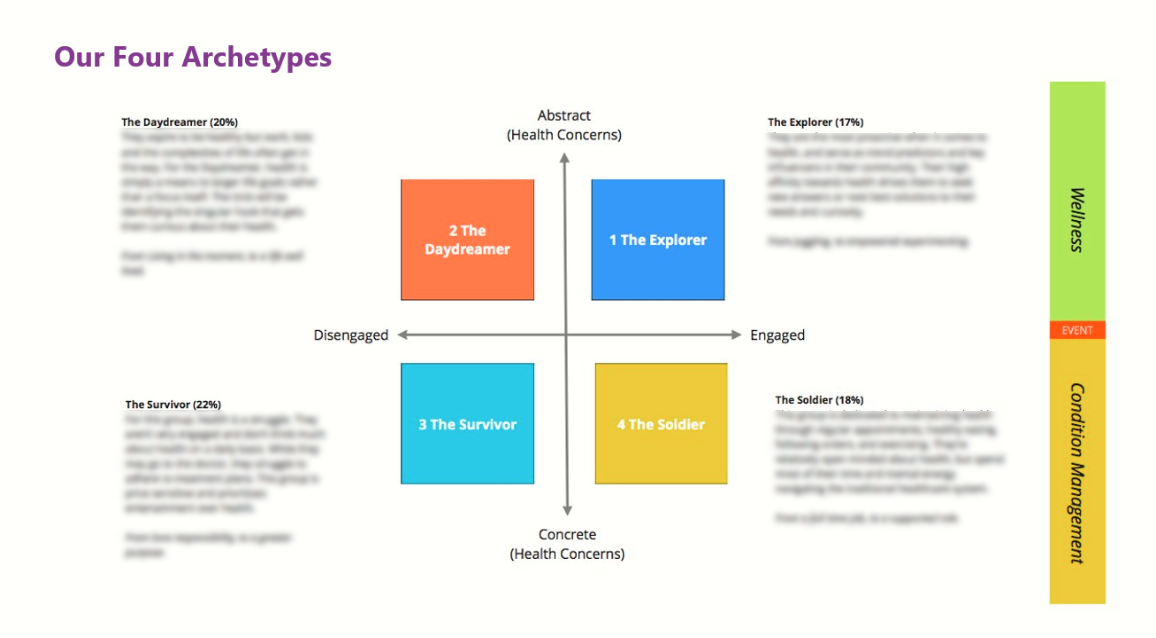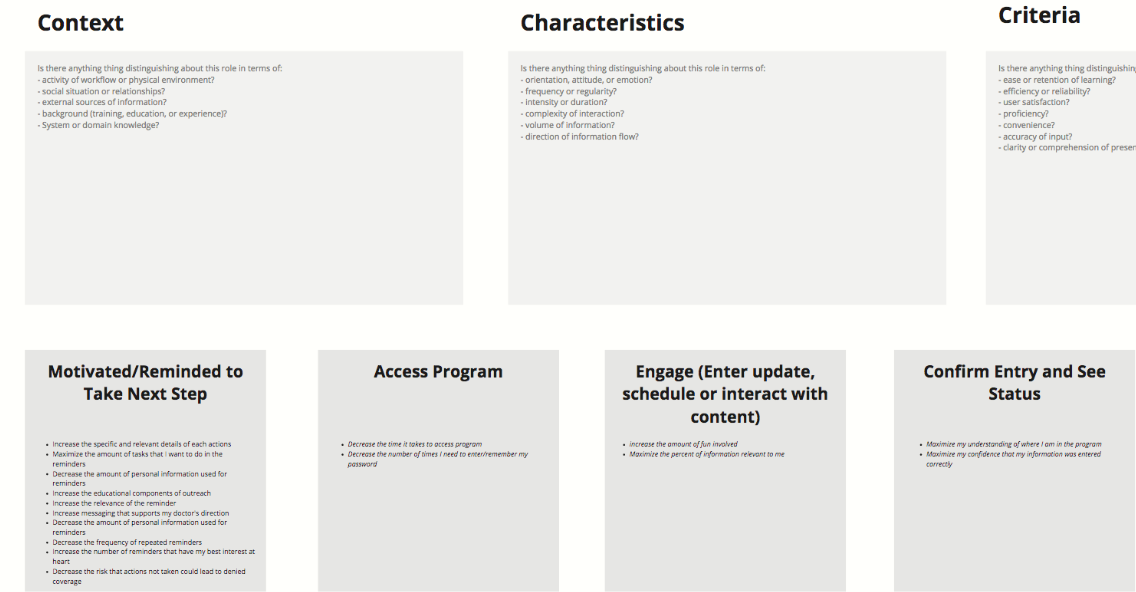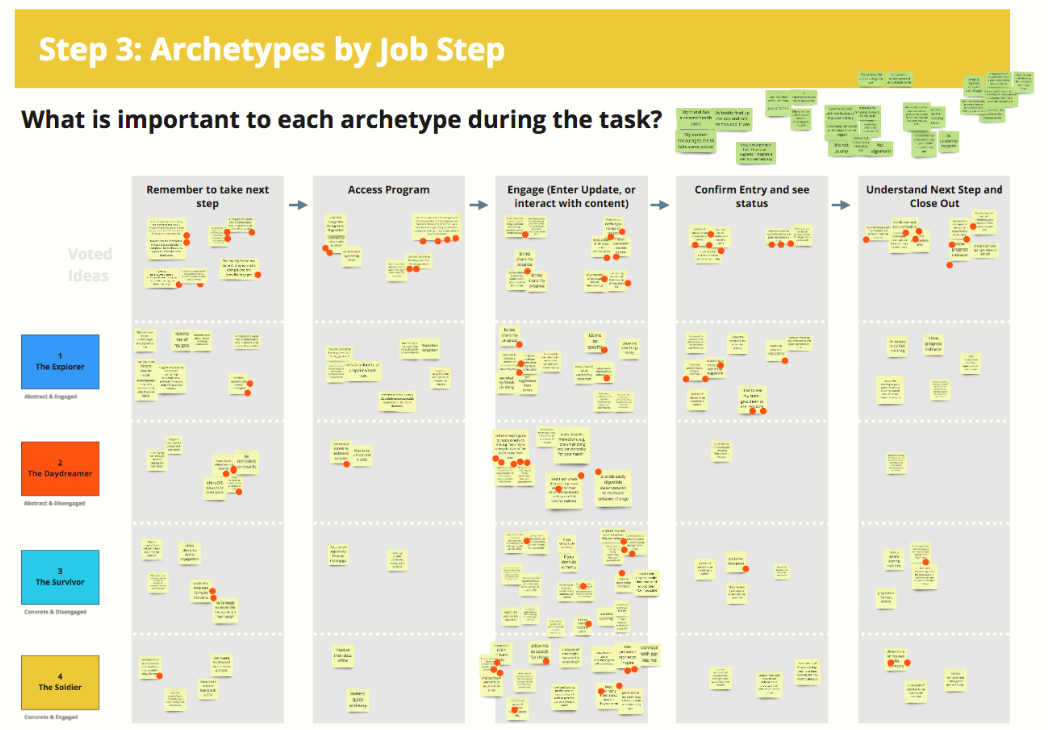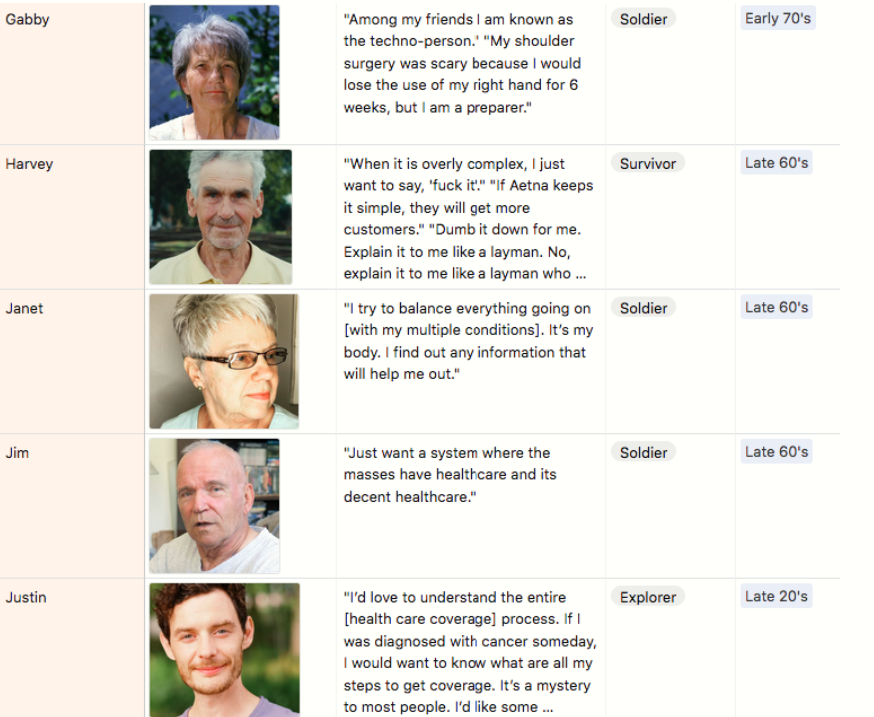Improve Design Outcomes through Data-Driven Archetypes
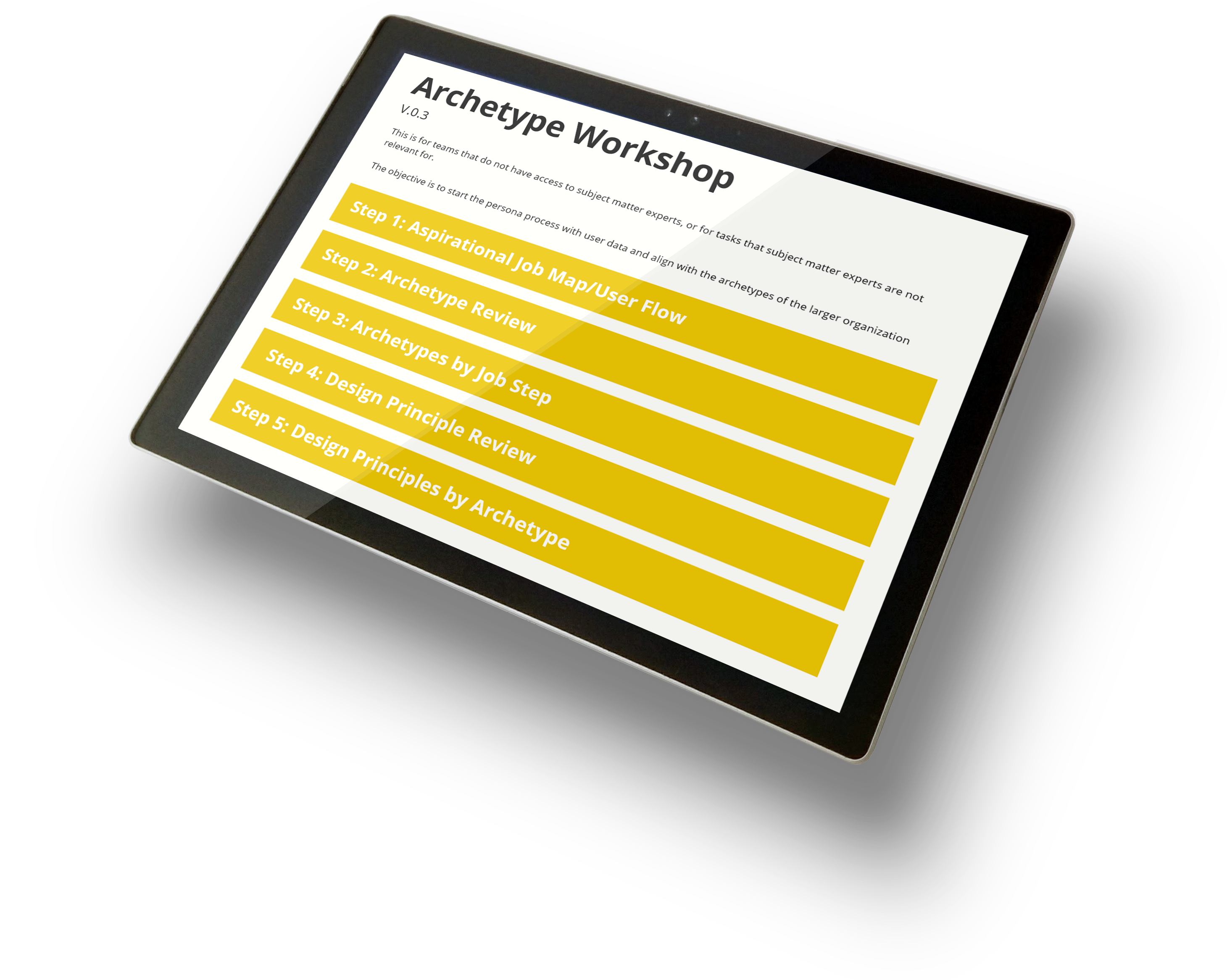
My Role
- Desk Research
- Stakeholder Research
- Archetype validation
- Workshop designer and Facilitator
- Founder of the Archetype governance group
Summary
Design team members needed representational personas that could inform designing a diverse range of experiences.
Consider how different these examples are; buying a pregnancy test, deciding on a chronic condition procedure, understanding a new insurance plan, and taking care of a chronically-ill loved one.
Problem
How can we achieve an effective understanding of our users that is shared across Aetna Insurance as well as CVS retail pharmacy users?
The lack of consistent framework for representing our users incurred the following consequences:
- Increased design time due to unclear user motivations and behaviors.
- Lost productivity due to reinventing the view of users with every design initiative.
- Lack of alignment with other groups across CVS Aetna.
Solution Overview
Start with identifying health-related archetypes that can be relevant across the organization. These archetypes must not vary by task, so we can compound knowledge at the archetype level. Next, create workshops that allowed design teams to create research-informed ad-hoc personas that are informed by the task or feature the team is working on.
Process
- Define the archetypes
- Create process to define the job (task) context
- Conduct archetype and persona workshops with the team
- Create the infrastructure to segment research participants and tag research findings to the archetypes
Define the Archetypes
CVS/Aetna serves too many varied experiences to standardize on a set of personas. The behaviors that inform the needs of people doing these tasks are so different that there is no way one persona could describe these two and the 1000’s of other experiences that we delivery. The people we serve come from all demographics, which only multiplies the problem.
Archetypes are grounded in research and data. A research subject’s archetype can be determined with one qualifying question. When we assign each participant to their archetype, we can ground our understanding in research and data.
The knowledge of foundational elements is compounded. The archetypes’ characteristics are at an abstracted enough level that we can compound our knowledge about them by researching them in a large number of task contexts.
Conduct Workshops with the product and design team
For teams that do not have access to deep subject matter experts, conduct a workshop that that aligns archetype knowledge with job context. This includes the following steps:
- Pre-workshop - design a research-based job/task context
- Create an aspirational job map (user flow)
- Review the archetypes
- Analyze the archetypes by job step
- Review design principles
- Define design principles by archetype
- Persona definition workshop
Create the infrastructure to segment research participants and tag research findings to the archetypes
(Note: Names and photos are not real participants.) The research repository already contained the tagging necessary to produce job/task information, as well as expected outcomes along the way. The challenge was to segment the previous participants by archetype and create a segmentation model going forward. Based on health status and engagement, we were able to tag 85% of previous participants with an archetype.
We added a single question that has been validated to be an accurate predictor of archetype affiliation to tag all research feedback.
Results
- Conducted workshops with six teams
- Founded the archetype governance committee
- Teams from across the CVS/Aetna organization are adopting the archetypes
- Research repository is tagged with archetypes, and continues to compound our knowledge
- All studies now include an archetype segmentation analysis
